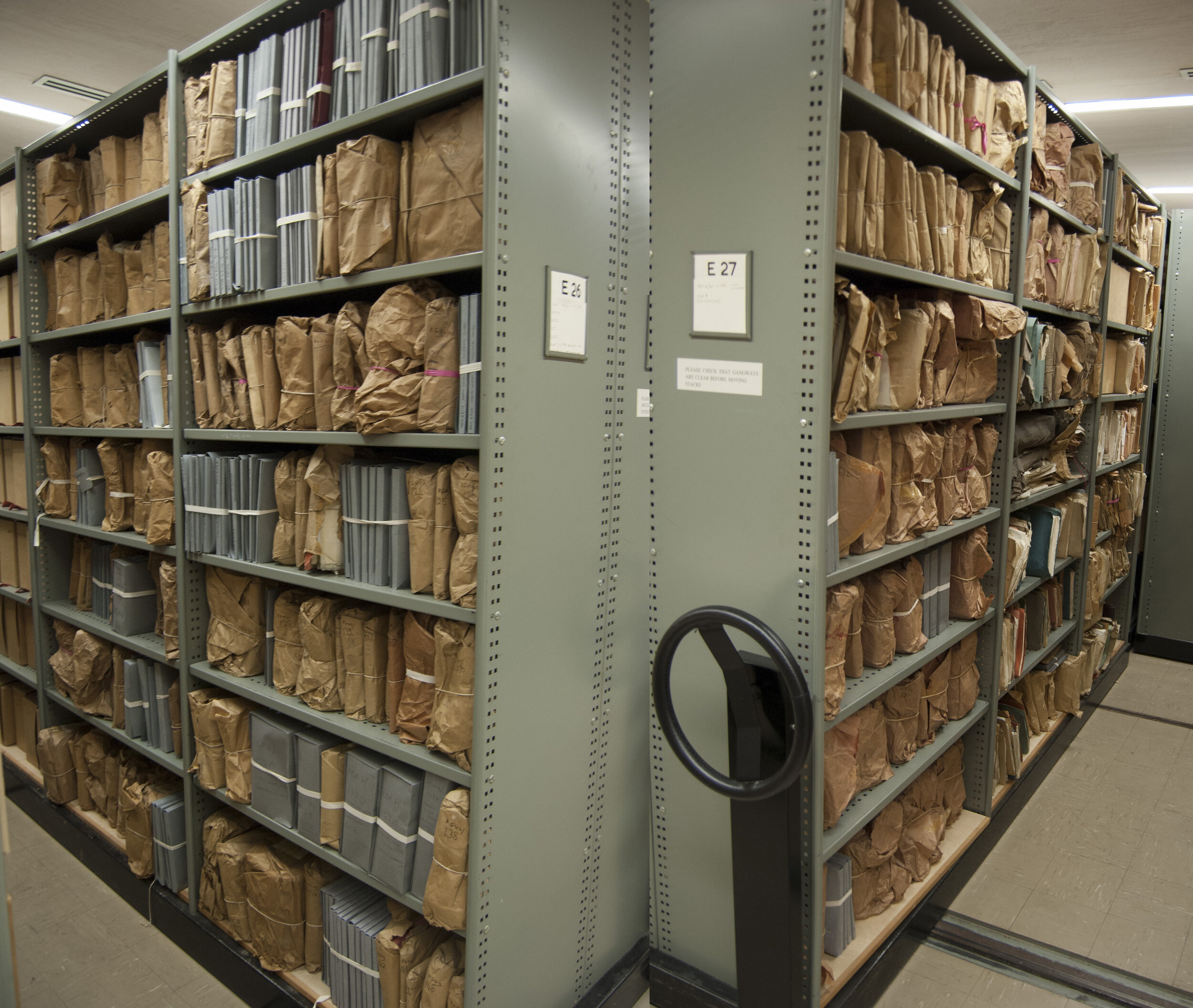Sir Albert Richardson at Bedfordshire Archives
Pamela Birch, Archivist, Bedfordshire Archives @BedfordshireArchives
Uncatalogued presentation drawing of new library and theatre at University College London by Richardson & Gill, c. 1930.
Bedfordshire Archives is an English local authority archive service. Our remit is to collect and make available archival material relating to the geographical county and its inhabitants. In 1980 we received on deposit around 40,000 items created by the architectural practice of run by Albert Richardson and his partners. Sir Albert Richardson, professor of architecture at University College London and champion of Georgian architecture, lived in Bedfordshire and his architectural practice had offices there as well as in London; deposit with us was the best solution available to save the collection from decay or dispersal. The collection contains drawings, correspondence, sketches, exhibition and competition material, photograph albums and lecture notes.
Knighted for his services to architecture Richardson was a well-known figure of his time. The practice was responsible for a number of important projects, for instance the new Financial Times building, restoration of St James’s Piccadilly after war damage, parts of University College London, and a plethora of smaller projects from church lighting to council houses. While the archives service recognises the importance of the material it does not have the resources necessary to catalogue and promote it.
Richardson’s watercolour sketch of Long Melford Hall Suffolk, reconstructed a wing after a fire in 1942; this wing is now the National Trust tea room. Reference RGH6/157/5/9.
Sir Albert’s link with the county brought the collection within our remit, but the bulk of it relates to properties outside Bedfordshire, from Scotland to Devon, Northern Ireland to Suffolk. This makes the potential for use greater while weakening the argument for diverting our resources to it and away from purely Bedfordshire focused collections.
Cataloguing the collection from beginning to end would have required a substantial investment of money, time and space; working on the drawings requires a lot of room! Tackling the collection in sections – as resources allow – and hoping these join up at the end is the only real option, but listing in response to customer enquiries has led to a disjointed, incomplete and difficult-to-use catalogue still heavily reliant on the original, inaccurate company indexes. Recently the owner of the collection contributed funding that enabled the cataloguing of 4,500 drawings but bids for grants to enable other parts of the material to be tackled have not been successful.
Bedfordshire Archives faces a catch 22 – it has an important collection that deserves to be better known and used and it cannot be better known without being catalogued to make it usable. It cannot attract the resources to make the catalogue usable because demand for it cannot be demonstrated, and demand cannot be demonstrated because it isn’t well known and used.
If you wish to book an appointment or make an enquiry, please email archive@bedford.gov.uk
Correspondence files from the Richardson & Houfe Collection at Bedfordshire Archives.
Rolled plans of the Richardson & Houfe Collection at Bedfordshire Archives from the Ampthill office with flat plans stored beneath.




